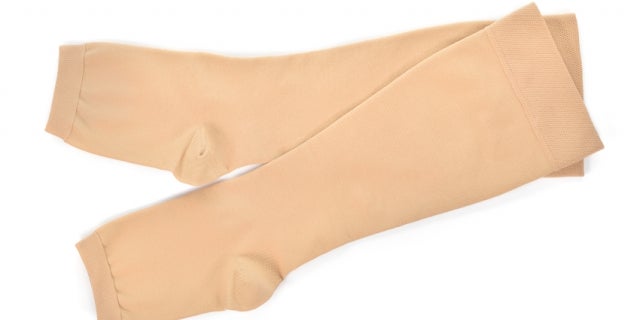
When patients hear the terms TED (thromboembolic deterrant) hose and compression socks, they may think the two are interchangeable. They are two different types of compression garments for two different types of patients. In general, patients are prescribed one of the two for the treatment of various conditions, of which the most common are edema (fluid retention) and DVT (deep vein thromboses) or blood clots. Having the right compression garment for the right condition can not only expedite healing, but also help to keep the patient safe.
TED hose
TED hose may be prescribed to patients who are non-ambulatory, meaning they are not up and moving around on their own. For these patients, the risk of a blood clot developing in their legs is a main concern for health care providers, as clots can break free and travel through the bloodstream to the lungs and cause a pulmonary embolism. TED hose help reduce this risk by administering pressure on the lower part of the leg and feet – with the most compression occurring at the calf muscle. As patients lay in bed, blood is more likely to pool in the calf, creating the right environment for a clot to form.
TED hose compression levels are measured in mmHg, or millimeters of mercury, just as we measure our blood pressure. TED hose compression levels are 20 mmHg or below. Patients may wear TED hose for up to three weeks, at which time they are mobile once again or have been prescribed a different treatment to reduce the risk of blood clots.
Compression Socks
Whereas TED hose are prescribed for non-ambulatory patients, compression socks are best suited for patients who are able to move around. Generally, compression socks are for patients with circulatory problems such as venous insufficiency, lymphedema and varicose veins. For some patients, this can be a temporary condition during pregnancy, for example. Compression levels range from 15 to 20 mmHg up to 60 mmHg. Anything above 20 mmHg is considered prescription strength. Compression socks help keep blood from pooling in the ankles, where the pressure is the greatest.
For more information on the Advanced Wound Center at Hillcrest South, please visit //www.hillcrestsouth.com/portfolio/wound-care-center.
